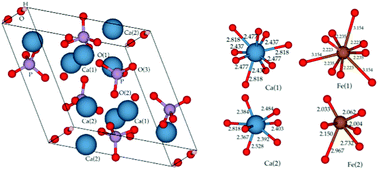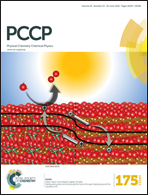Hydroxyapatite substituted by transition metals: experiment and theory
Abstract
Bioceramics are versatile materials for hard tissue engineering. Hydroxyapatite (HA) is a widely studied biomaterial for bone grafting and tissue engineering applications. The crystal structure of HA allows for a wide range of substitutions, which allows for tailoring materials properties. Transition metals and lanthanides are of interest since substitution in HA can result in magnetic properties. In this study, experimental results were compared to theoretical calculations of HA substituted with a transition metal. Calculation of a 10 atomic percent substitution of a transition metal ion Mn2+, Fe2+, and Co2+ substituted HA samples lead to magnetic moments of 5, 4, and 3 Bohr magnetons, respectively. Hydroxyapatite substituted by transition metals (MHA) was fabricated through an ion exchange procedure and characterized with X-ray diffraction, Fourier transform infra-red spectroscopy (FTIR), X-ray photoelectron spectroscopy, and vibrating sample magnetometer, and results were compared to theoretical calculations. All the substitutions resulted in phase-pure M2+HA with lattice parameters and FTIR spectra in good agreement with calculations. Magnetic measurements revealed that the substitution of Mn2+ has the greatest effect on the magnetic properties of HA followed by the substitution of Fe2+ and then Co2+. The present work underlines the power of synergistic theoretical–experimental work in guiding the rational design of materials.


 Please wait while we load your content...
Please wait while we load your content...